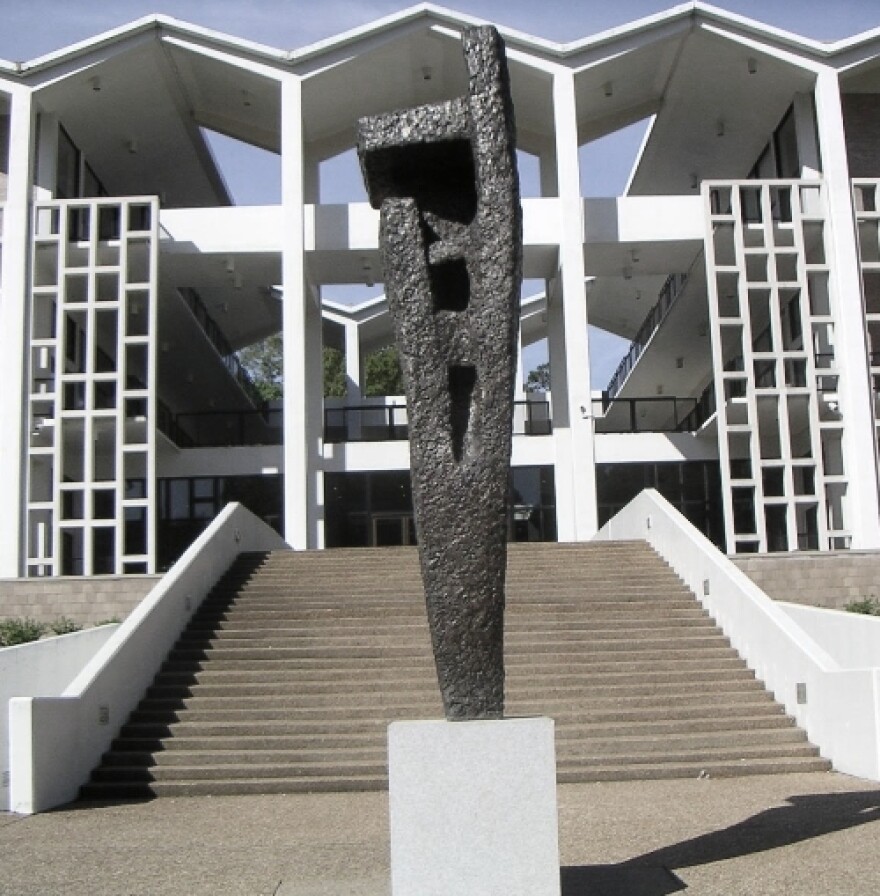By Eleanor Boudreau
http://stream.publicbroadcasting.net/production/mp3/wkno/local-wkno-916289.mp3
Memphis, TN – Ted Rust grew up in California and studied at Deep Springs, Cornell, and Yale. He directed the fine arts department at William and Mary in Virginia and worked for the Red Cross during World War II, but his most enduring contribution was to Memphis. He died here Friday at age 99. Rust was a sculptor and he also molded the Memphis College of Art in its most formative years.
Rust moved the college from its original home in two Victorian houses on Adams Avenue to its modern location--an architectural gem in Overton Park.
At that time, African-Americans were only allowed in the park on Thursdays, but there was a black student Rust wanted to attend his college.
"Ted saw to it that she could. And then, you know, everything sort of opened up," remembered painter and early student at the college Veda Reed.
In 1961, in its modern building, Rust's college became one of the first integrated schools in the city.
Rust also pushed boundaries when he hired Murray Riss to start a photography department. Riss brought a show that included nude photos to the college. People, "complained, they went to the city council, it caused great commotion in the city. And Ted Rust stood by me the whole time," Riss said.
The son of a professor was kidnapped, and Riss and Rust finally took the photos down. The boy was returned unhurt. The kidnapper was never caught.
"It was now two days before the end of the show," said Riss. Later, Riss said, he and Rust laughed about the incident.
Reed says Rust's work is, "Robust and tender at the same time."
Rust's most iconic sculptures were eventually cast in bronze, but they started out just as frames. Rust would pull a little ball from a larger wad of clay, roll it around in his hands, then apply it to the frame by pressing it with his fingers, or by hitting it with a mallet. Rust, like Auguste Rodin, left his fingerprints all over his work.
"I found it very attractive that he did that," said Riss. "It could have been, he could have smoothed it all out, but that way he left it, made it more personal--said here, 'I pushed here. I squeezed here. This is my hand here, and this is my finger here.'"
Rust's IKON statue has this touched, choppy, sea-like texture. It sits in front of the college of art, it's Cubistic, and it's raised in air, so part of the sculpture is the way it interacts with the sky.
Rust's art, which at one point was inseparable from his life, isn't anymore. His art lives on.


